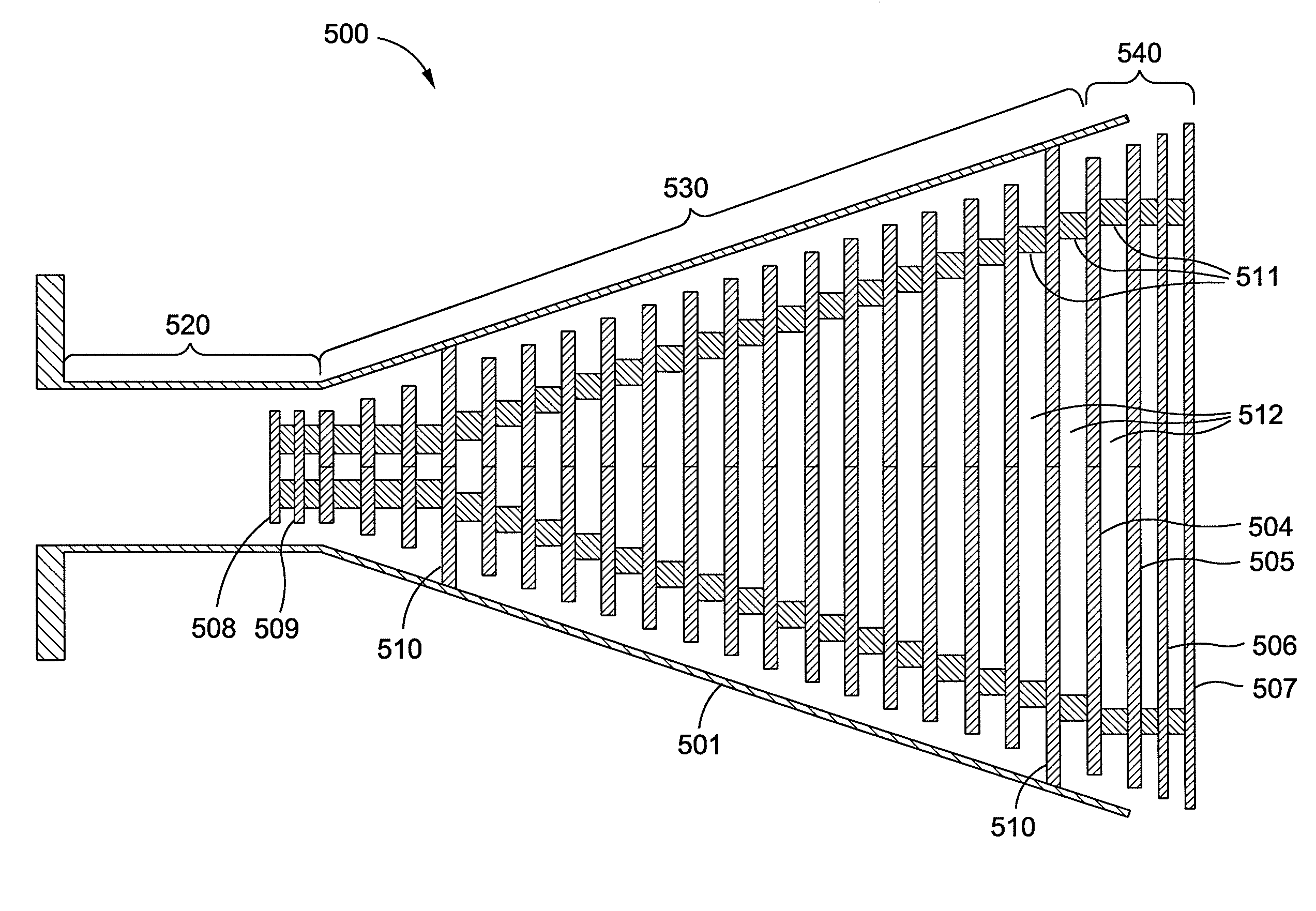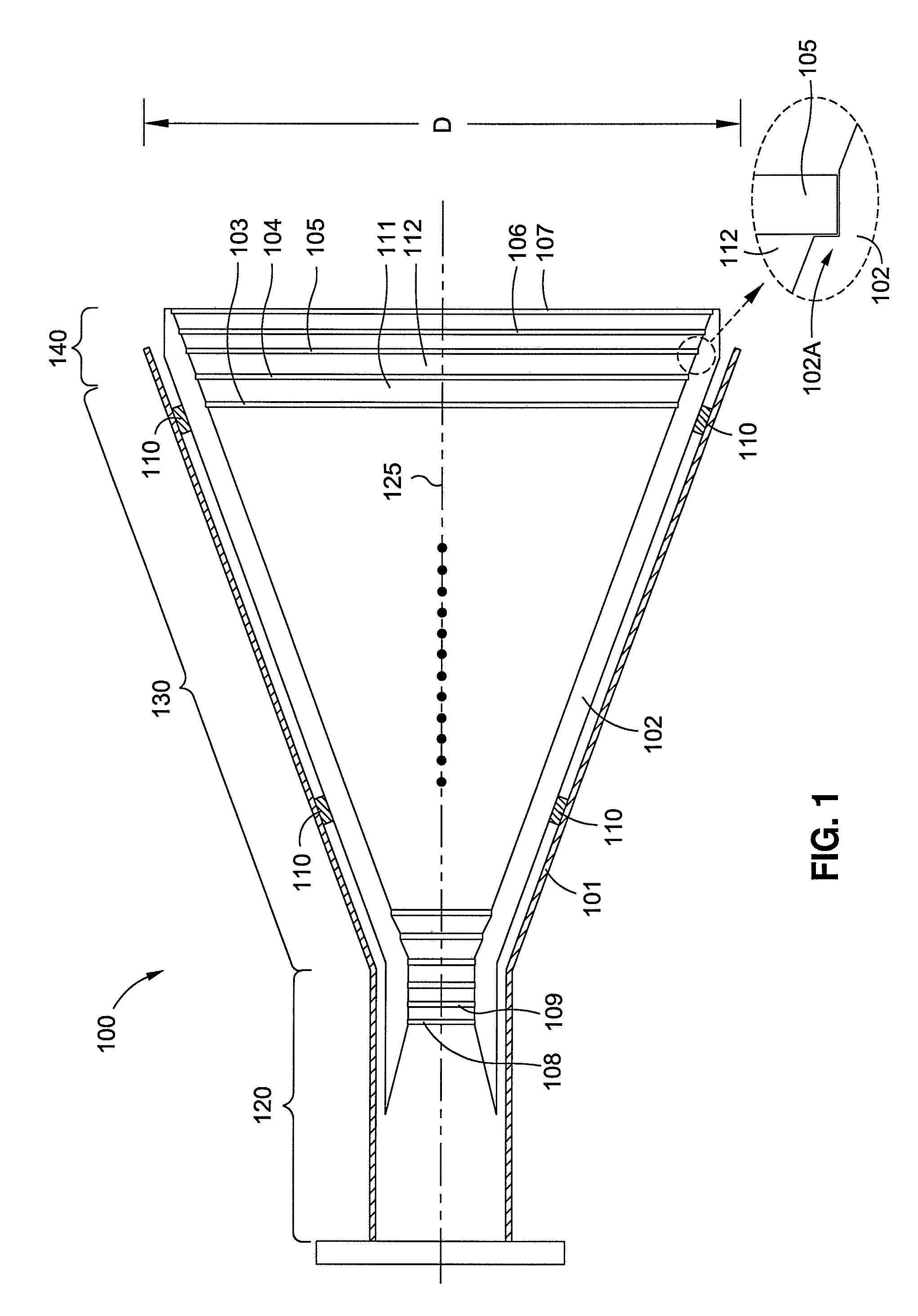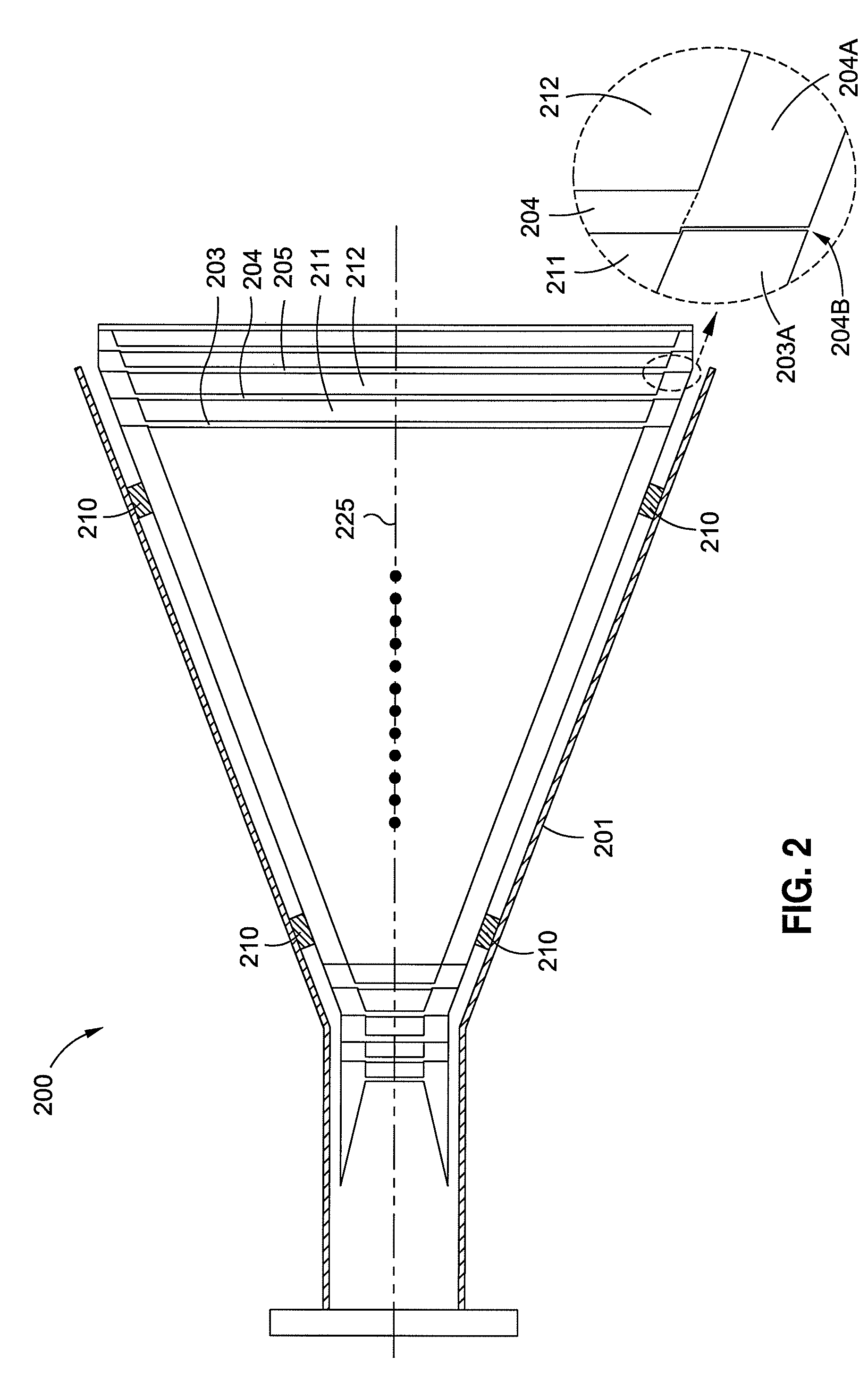Artificial dielectric antenna elements
a dielectric antenna and dielectric load technology, applied in the field of dielectric loading antenna systems, can solve the problems of increasing the mass of the antenna system, degrading the strength of the signal, increasing the insertion loss, etc., and achieves the effects of reducing the mass, reducing the risk of esd, and improving radiation performance and frequency bandwidth
- Summary
- Abstract
- Description
- Claims
- Application Information
AI Technical Summary
Benefits of technology
Problems solved by technology
Method used
Image
Examples
Embodiment Construction
[0022]In the following detailed description, numerous specific details are set forth to provide a full understanding of the present invention. It will be obvious, however, to one ordinarily skilled in the art that the present invention may be practiced without some of these specific details. In other instances, well-known structures and techniques have not been shown in detail not to obscure the present invention.
[0023]FIG. 1 shows an axial cut-away view along an axis 125 of a simplified diagram of a horn antenna 100 in accordance with one embodiment of the present invention. Horn antenna 100 includes a conducting horn 101, which has an aperture 140, a tapering region 130, and a throat 120. Conducting horn 101 extends from throat 120 to define aperture 140 having a diameter D. While referred to as a “diameter,” it will be appreciated by those skilled in the art that horn antenna 100 may have a variety of shapes, and that aperture 140 may be circular, elliptical, rectangular, square,...
PUM
 Login to View More
Login to View More Abstract
Description
Claims
Application Information
 Login to View More
Login to View More - R&D
- Intellectual Property
- Life Sciences
- Materials
- Tech Scout
- Unparalleled Data Quality
- Higher Quality Content
- 60% Fewer Hallucinations
Browse by: Latest US Patents, China's latest patents, Technical Efficacy Thesaurus, Application Domain, Technology Topic, Popular Technical Reports.
© 2025 PatSnap. All rights reserved.Legal|Privacy policy|Modern Slavery Act Transparency Statement|Sitemap|About US| Contact US: help@patsnap.com



